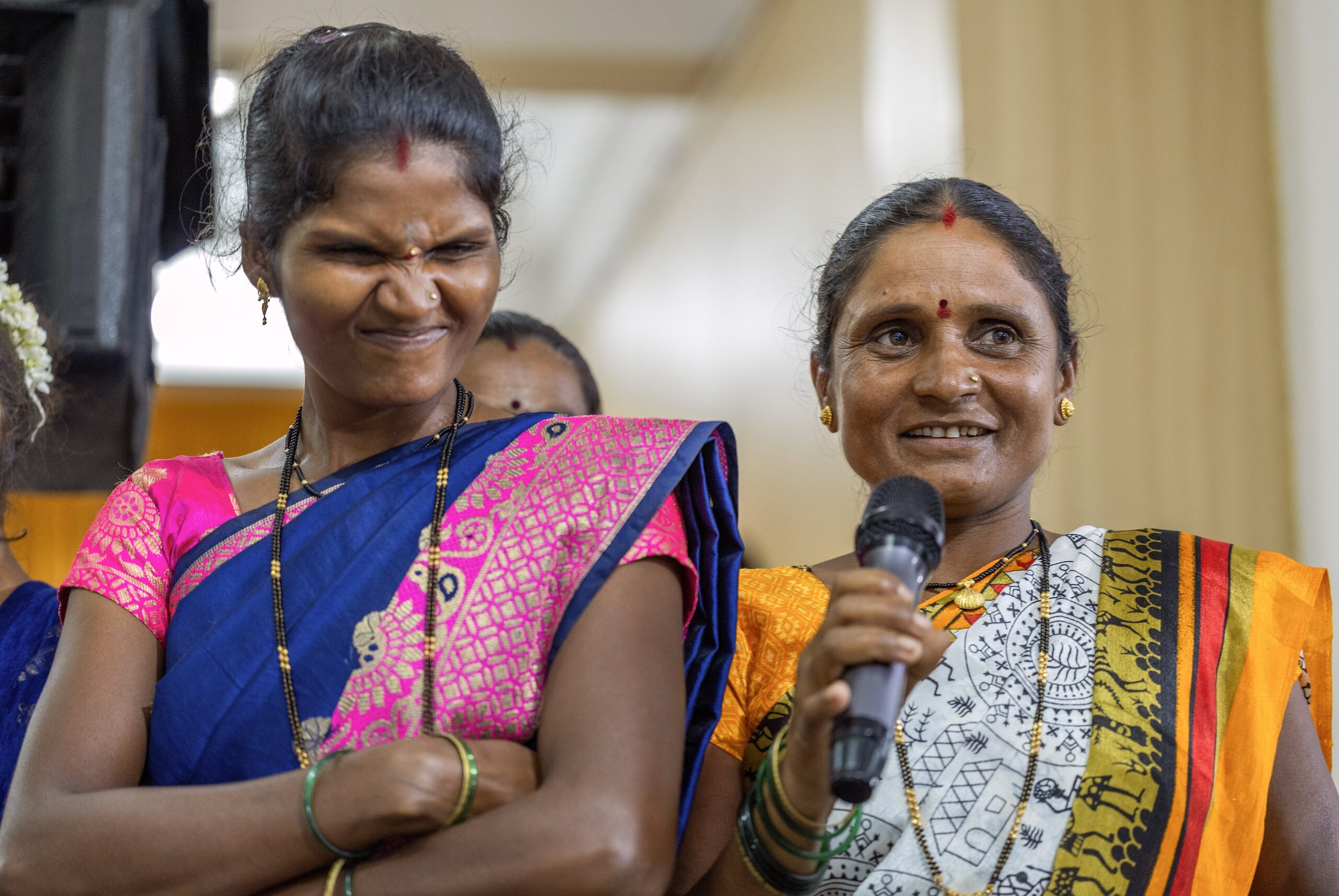
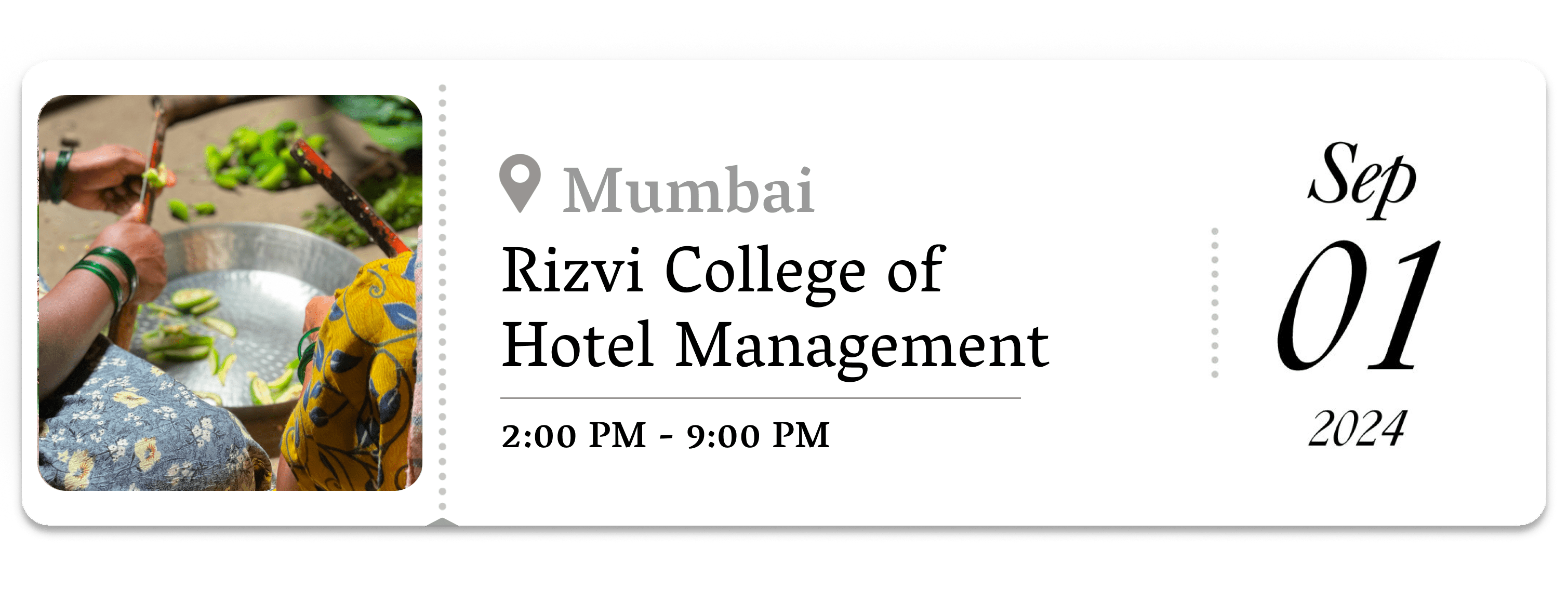
D
id you know India has over 1,000 reported wild edible plants? This lush world of herbs, flowers, berries, leaves, vegetables, mushrooms, and tubers is often beyond reach, especially for city-dwellers. In an attempt to bring these two worlds together, The Locavore collaborated with our #TLpartner OOO Farms—a collective of farmers from Maharashtra and Gujarat—for the much-awaited sixth edition of Wild Food Festival on Sunday, 1 September 2024.
The gloomy afternoon did not deter guests from queuing up at the Rizvi College for Hotel Management in Bandra, Mumbai, to not only taste some delicious wild foods but also learn more about the food traditions of Adivasi communities from the Sahyadri mountains in Maharashtra. Curious to know what transpired at the event? Read on.
A Once-A-Year Tasting Experience
The day began with tasting over 40 different wild monsoon ingredients from Maharashtra’s Sahyadri mountains, including the Indian thorny bamboo, fatangdi, kurdu, malabar embelia, and kharshinga. The many dishes featuring these ingredients were prepared by nearly 30 members of tribal communities—the Koknis, Warlis, Mahadeo Kolis, Katkaris, and Bhils.
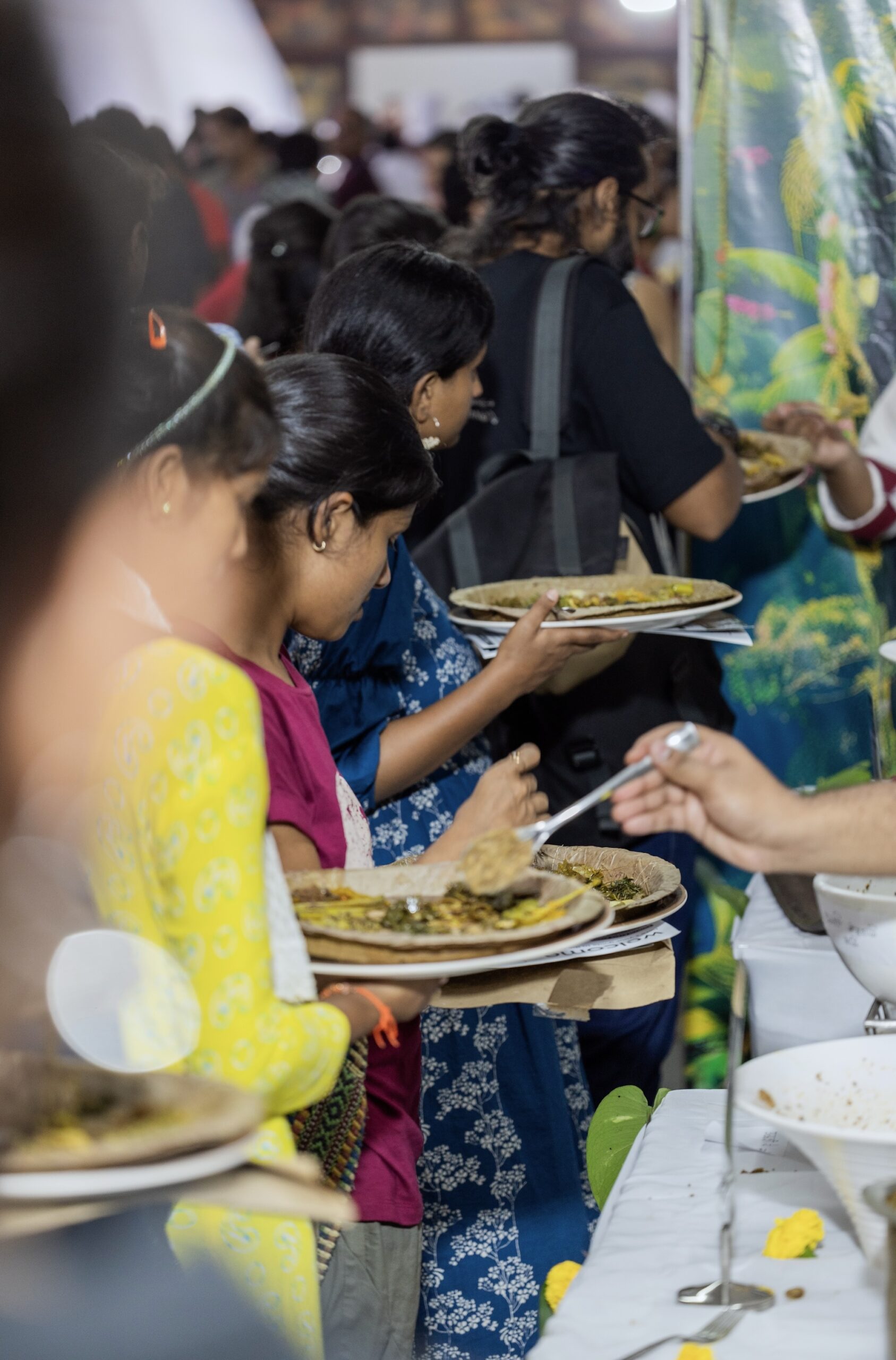
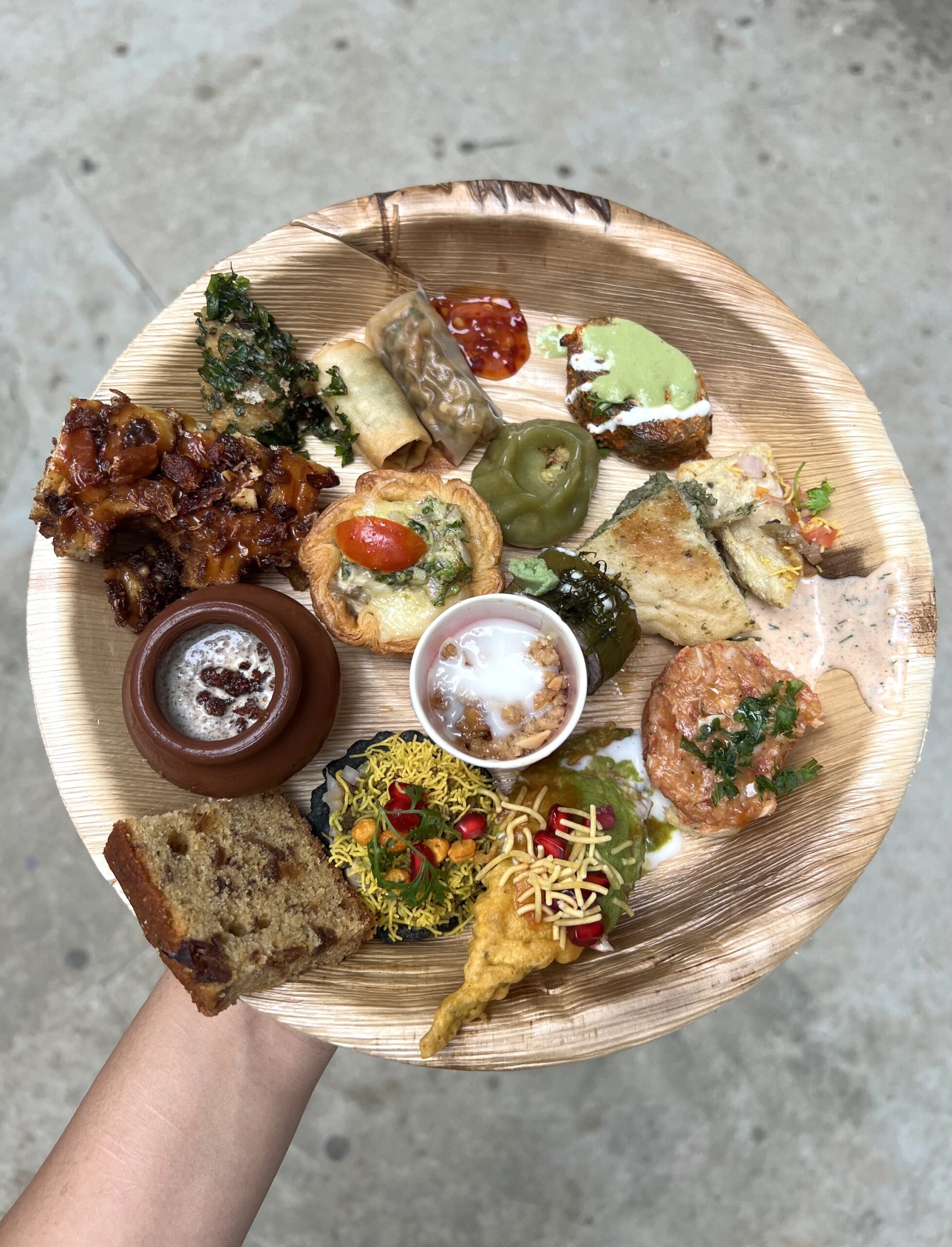
(L) Guests queue up to fill their plates with various preparations of the wild ingredients. (R) A loaded plate featuring the many snacks served at the High Tea. Photos by OOO Farms and ChefTZac.
When asked what he thought of the tasting, Ashwath, who attended the festival with his wife and daughter, said, “It didn’t look like it tasted good, but it tasted great!” The various dishes on the menu included Brined Kharshinga, Kena Fritters, Mahua Ladoos, Vaastechi Bhaaji, Ulshi Cha Mohar, and so much more.
A Wild Food-Inspired High Tea
The tasting was followed by a wild-food inspired high tea and snacks, prepared by the third-year students of Rizvi College of Hotel Management. The students trained and prepped for weeks to perfect the dishes—under the guidance of ChefTZac and Shailesh Awate, the founder of OOO Farms—learning more about the diversity of wild foods found in Maharashtra. The fruits of their learnings reflected in the innovative high-tea menu, which featured dishes such as Pendhra (Not Your Avo) Toast; Mahua and Black Pepper Ice Cream with Guava Crumble; Fatangadi Fish Pockets; and Kurdu Shahi Rolls among others.
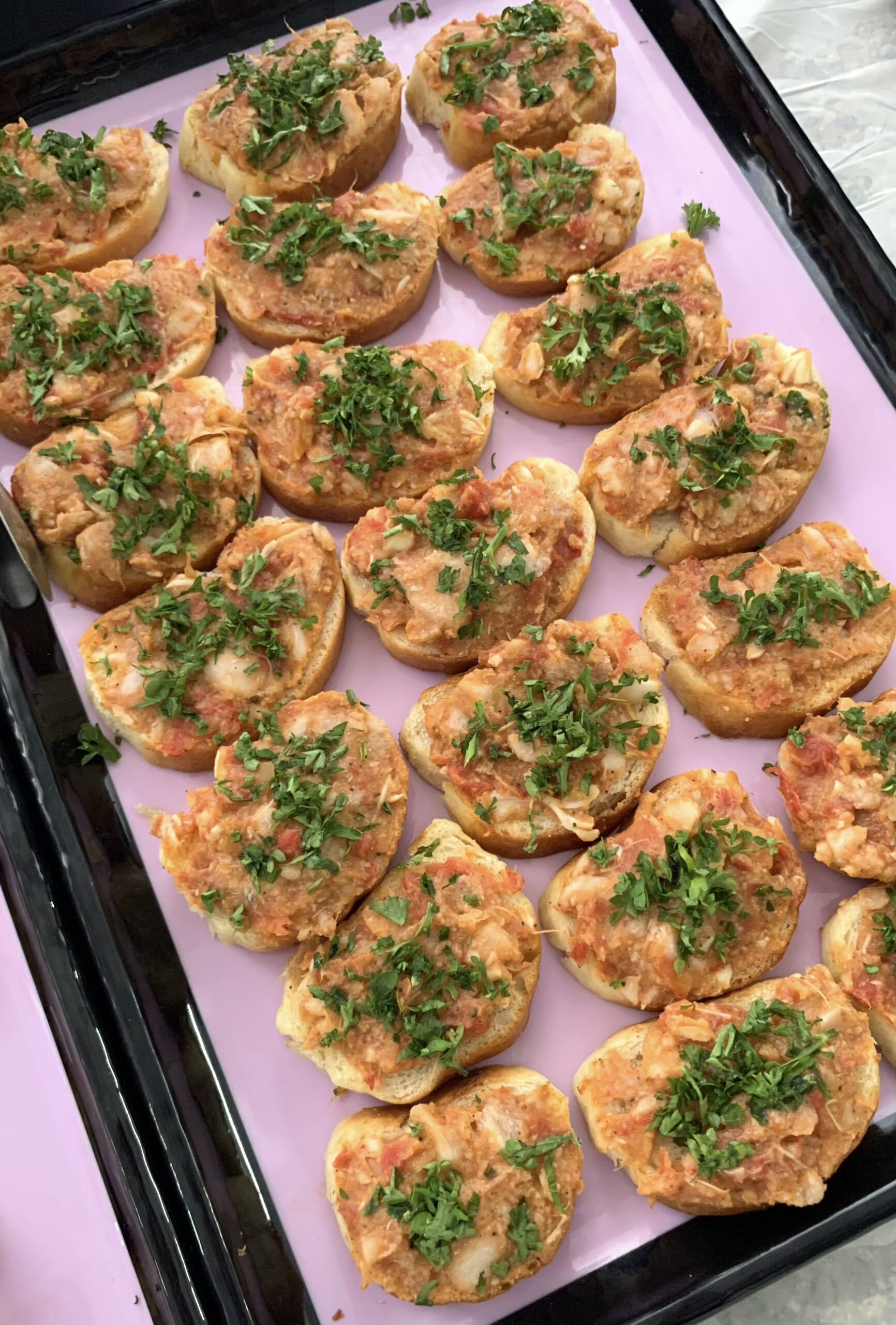
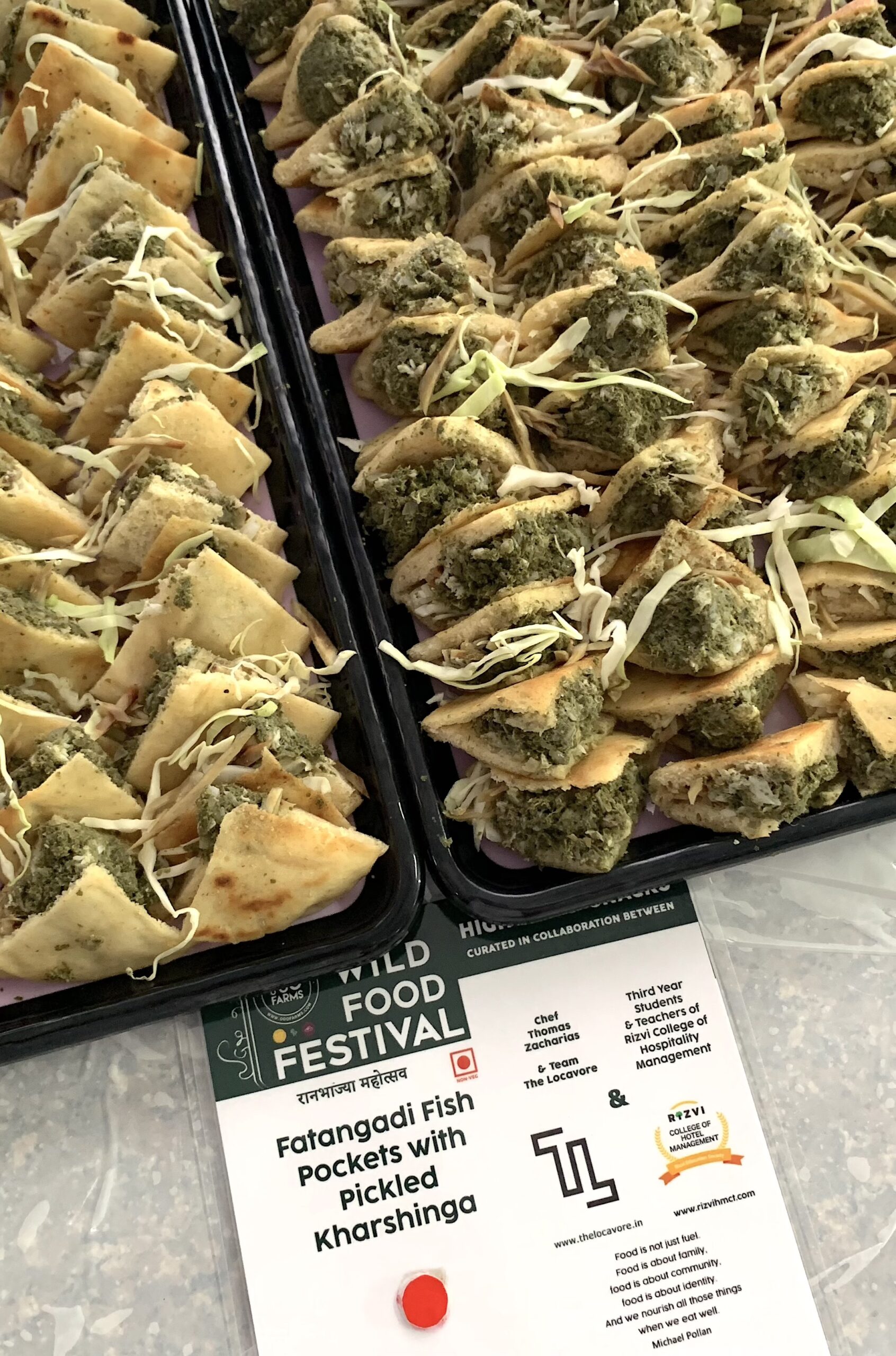
Pendhra (Not Your Avo) Toast (L) and Fatangadi Fish Pockets with Pickled Kharshinga (R) were prepared by the third-year students at Rizvi College of Hotel Management. Photos by Tanvi Kuckian.
Alongside the menu put together by the students were wild food-inspired dishes curated by chefs and restaurants from Mumbai and Pune—Mahua Cinnamon Roll by Maska Bakery, Khurasni Herb Creamed Mushroom Medley Quiche by Subko, Bamboo Chilli Ginger Chenong by Ground Up among many more. Chef Amrita of Amrit Home Kitchen presented a Wild Wild Salad highlighting seven different wild greens with spiced mahua. When asked about what she looks forward to at the festival, she shared, “There’s an insane amount of wild produce, and after being part of this [the festival] for so long, I get excited about recognising it all…and also, the tribal music performance [by Dhinda Baba of the Warli tribe]!”
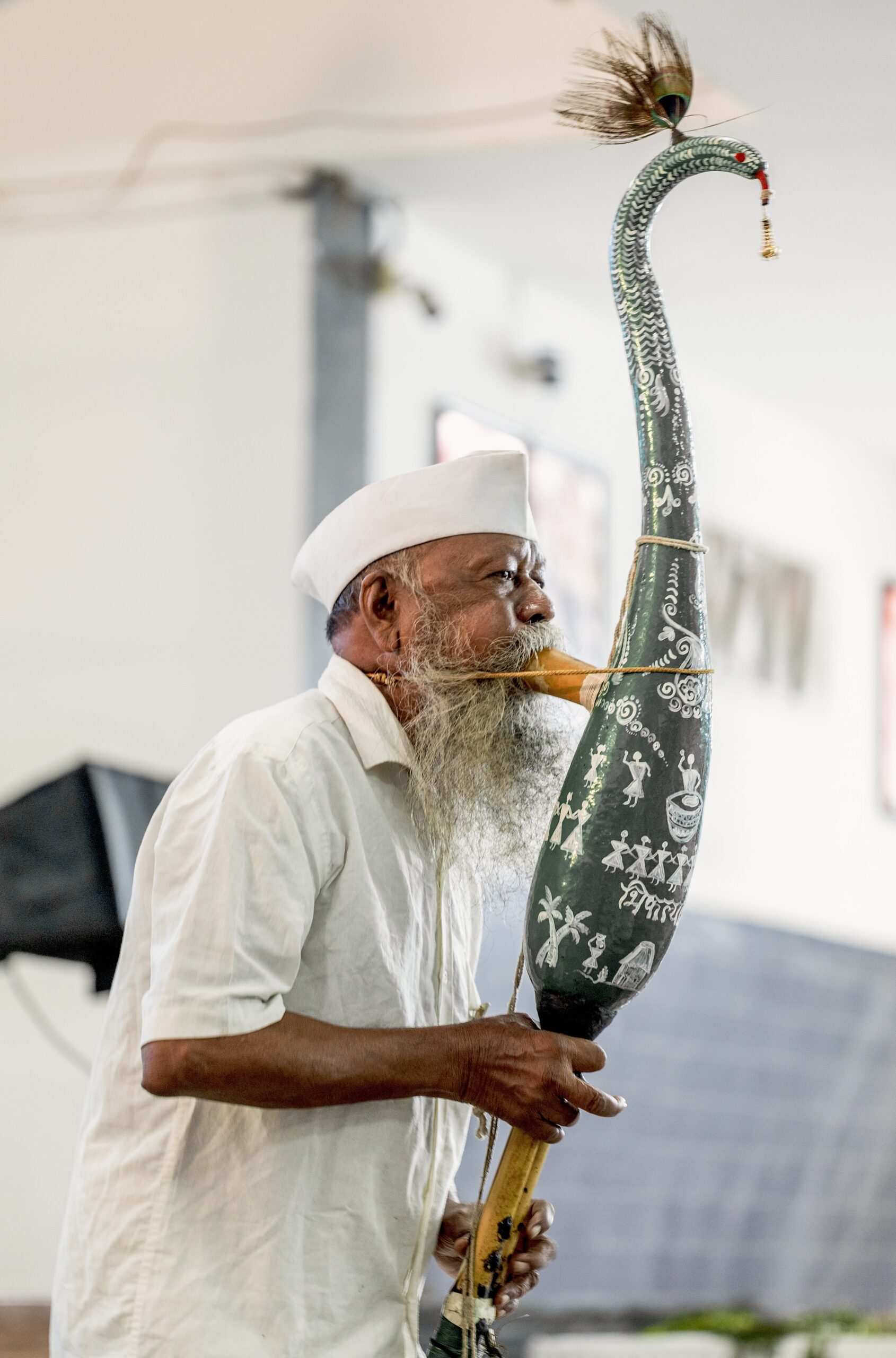
Bhiklya Ladkya Dhinda—also known as Dhinda Baba—a member of the Warli tribe, plays the tarpa horn, a wind instrument made out of bamboo and bottle gourd. Photo by OOO Farms.
Engaging Discussions on Preserving Wild Food Traditions
Once the guests were all fed, they headed to the auditorium to learn more about wild foods and the festival itself, hearing from experts like farmer-scientist Dr. Debal Deb; Shailesh Awate and Shikha Kansagara, co-founders of OOO Farms; and ChefTZac, founder of The Locavore. The sessions were followed by a thought-provoking panel discussion featuring Sunil Bhoye, a farmer-scientist from the Kokni tribe; Chef Jasleen Marwah of Folk; Chef Gayatri Desai of Ground Up; Ronit Jayaraman, a third-year student at Rizvi College of Hotel Management; and Shailesh Awate.
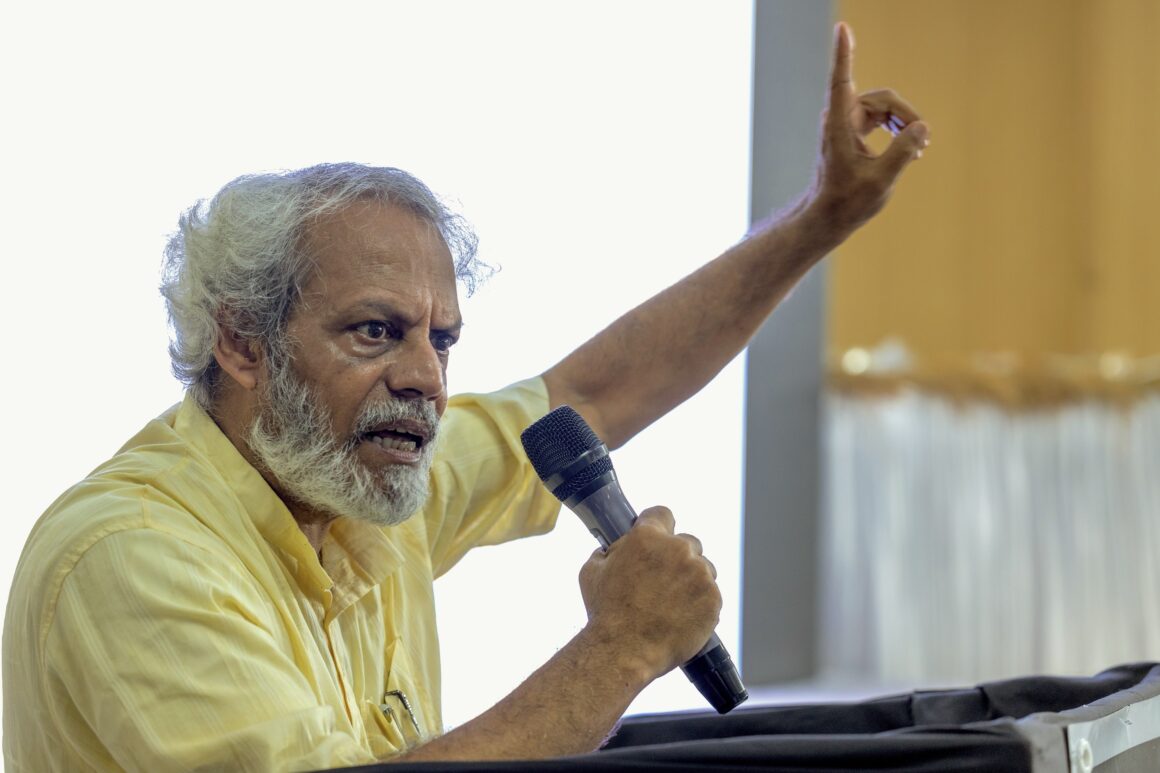
Dr. Debal Deb spoke to the attendees about the importance of forests in agriculture and nutrition security.
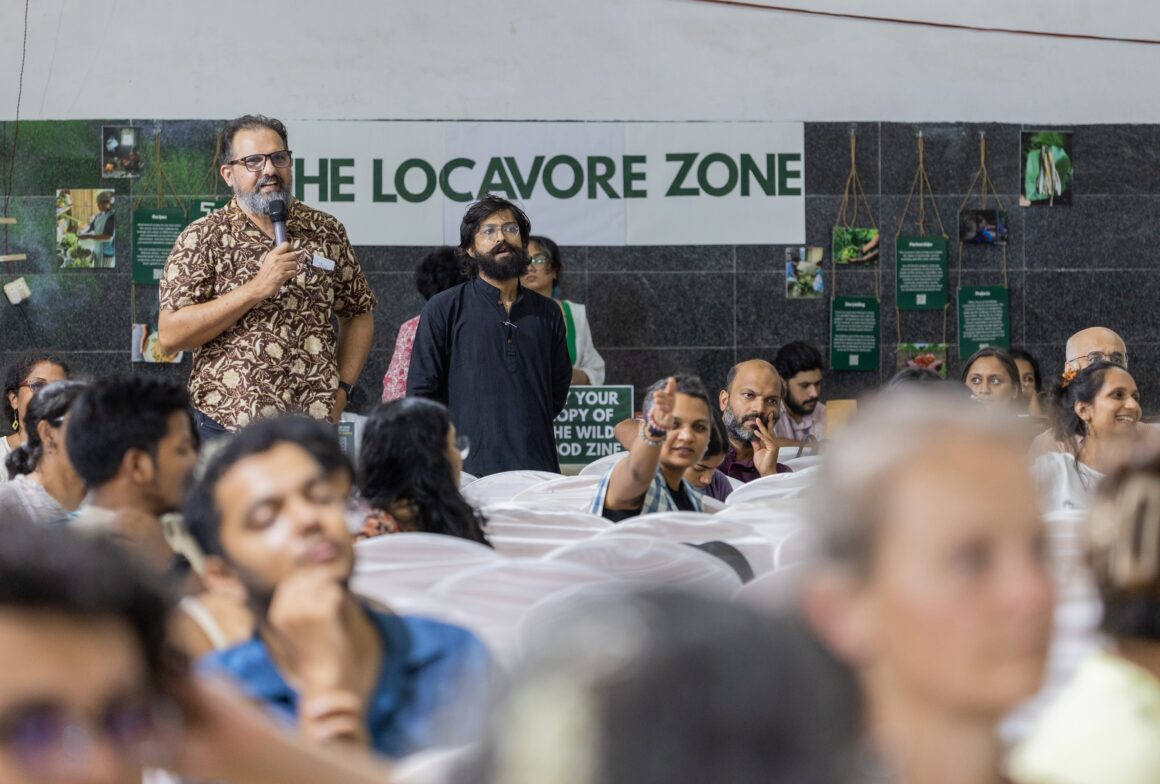
Enthused guests engaging in meaningful discussions with the speakers. Photos by OOO Farms.
In his speech, Shailesh spoke about how the Wild Food Festival has transformed over the years—what started out as a means to bring indigenous flavours to city-dwellers is now a space for dialogue between city-dwellers and tribal communities. The audience also got a glimpse into the lives of the communities through Raan Bhajya, a short documentary rooted in the Adivasi communities’ relationship with the forest and wild foods.
After the screening, the audience was introduced to the tribal communities who cooked for them. When one of the community members asked the audience how they liked the food, the audience responded with a loud “छान!” (“great”) in Marathi. The members also received a standing ovation, after which they hurried back to the kitchens to prepare for cooking dinner.
A Wildly Scrumptious Feast
There was more food awaiting the guests to wind up the day. . After the panel discussion, they headed for a 30-dish buffet dinner which featured preparations like Steamed Red Rice, Sweet Pumpkin Bhakris, Horse Gram Soup, Mahua Chilly Fritters, and Mohachey Gulab Jamun.
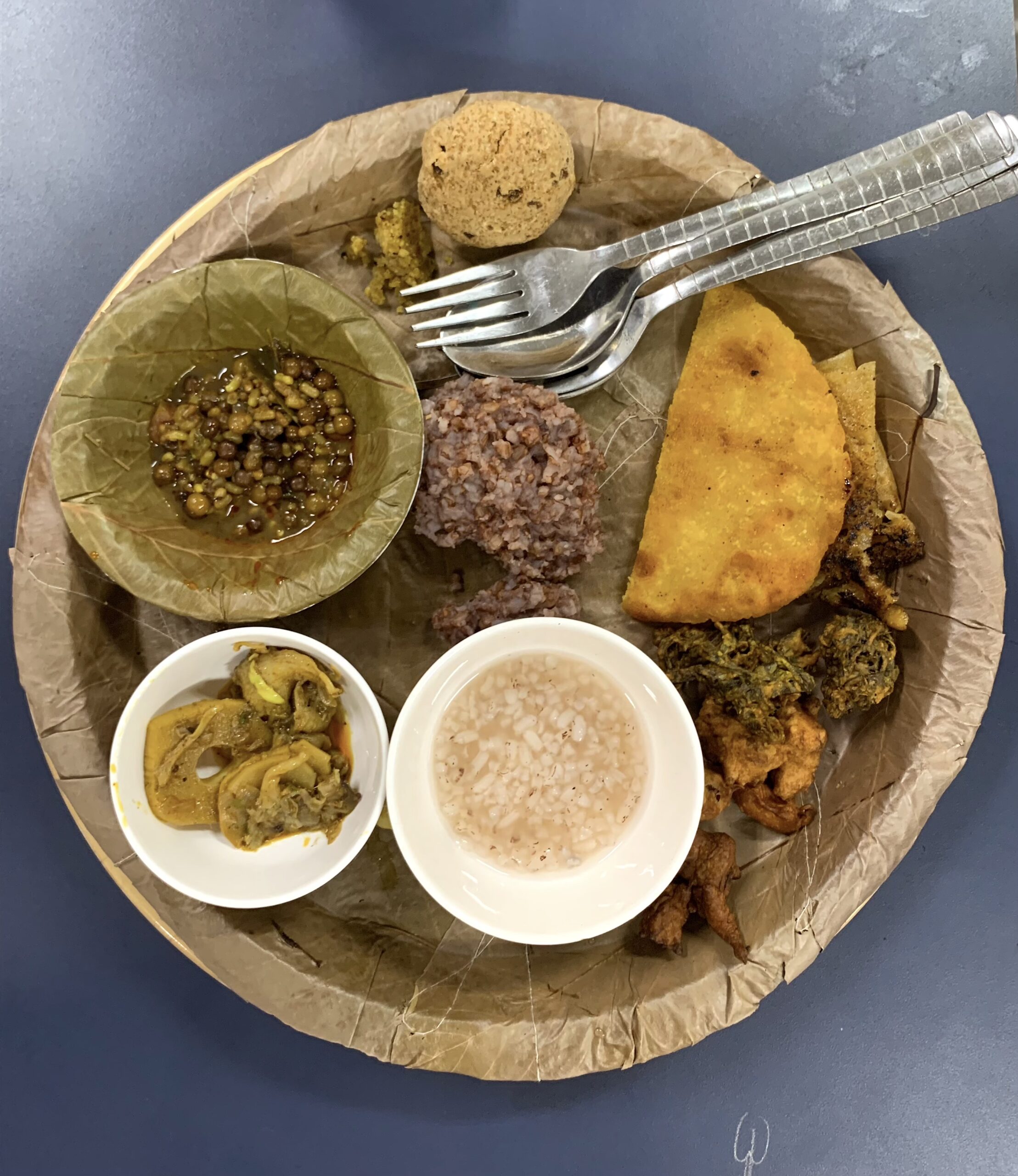
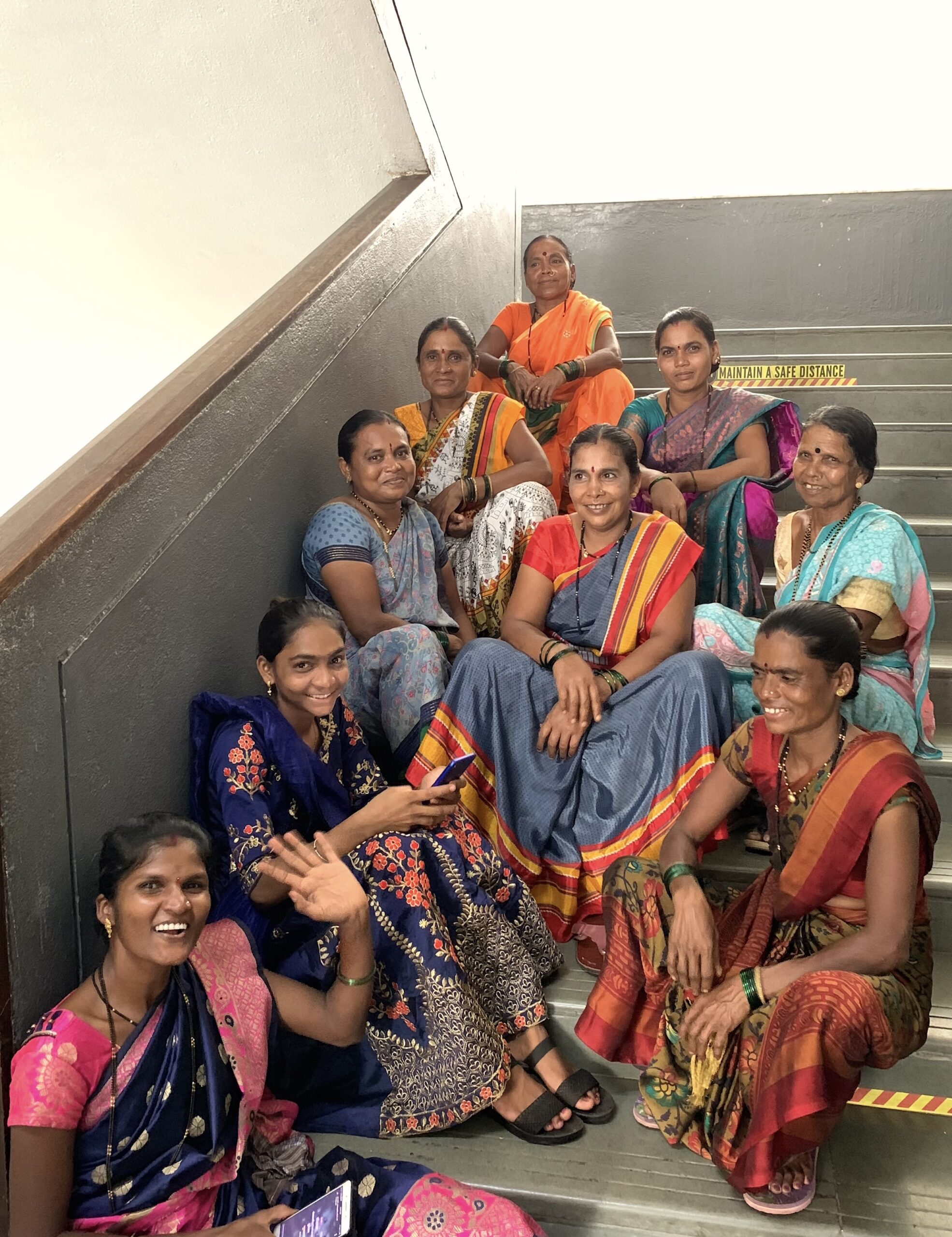
(L) A dinner plate featuring Steamed Red Rice, Sweet Pumpkin Bhakri, and Rice Congee, among other preparations. (R) The women from the many tribal communities who painstakingly cooked for more than 400 guests. Photos by Tanvi Kuckian.
Before dinner commenced, Team Locavore spoke to members of the tribal communities about their experience of cooking at the festival. Sanjay Dhinde, who was preparing the Steamed Red Rice, said, “Up until now, only we ate this food. Now everyone will—and I guarantee they will enjoy it!”
An Extensive Display of Ingredients and Seeds
The festival also included a showcase of nearly 200 wild vegetables from the Sahyadri mountains along with a display of the OOO Farms’ community seed bank. Attendees were thoughtfully engaging with the produce—asking questions about their origins, discussing ways to cook it, and of course, documenting it.
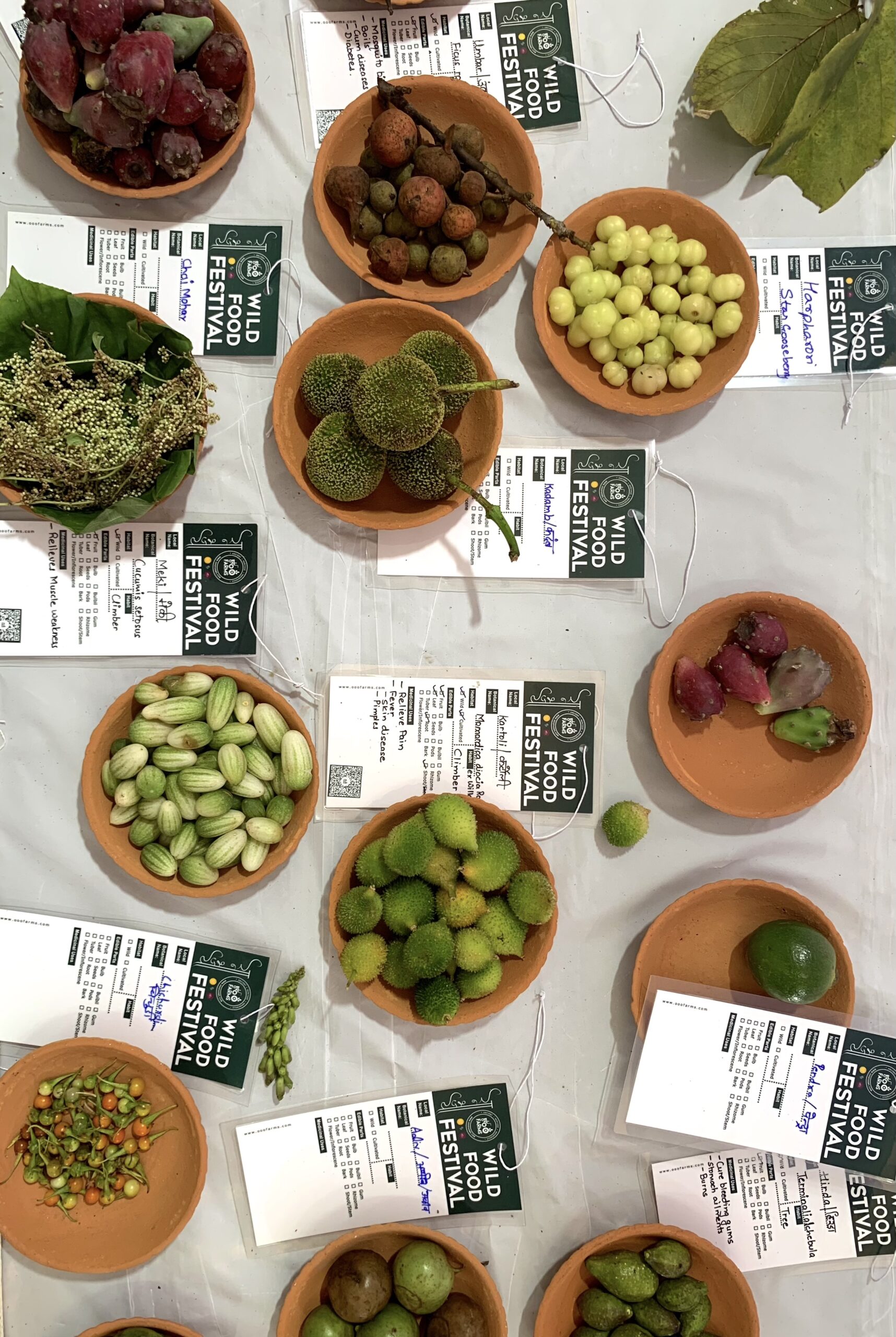

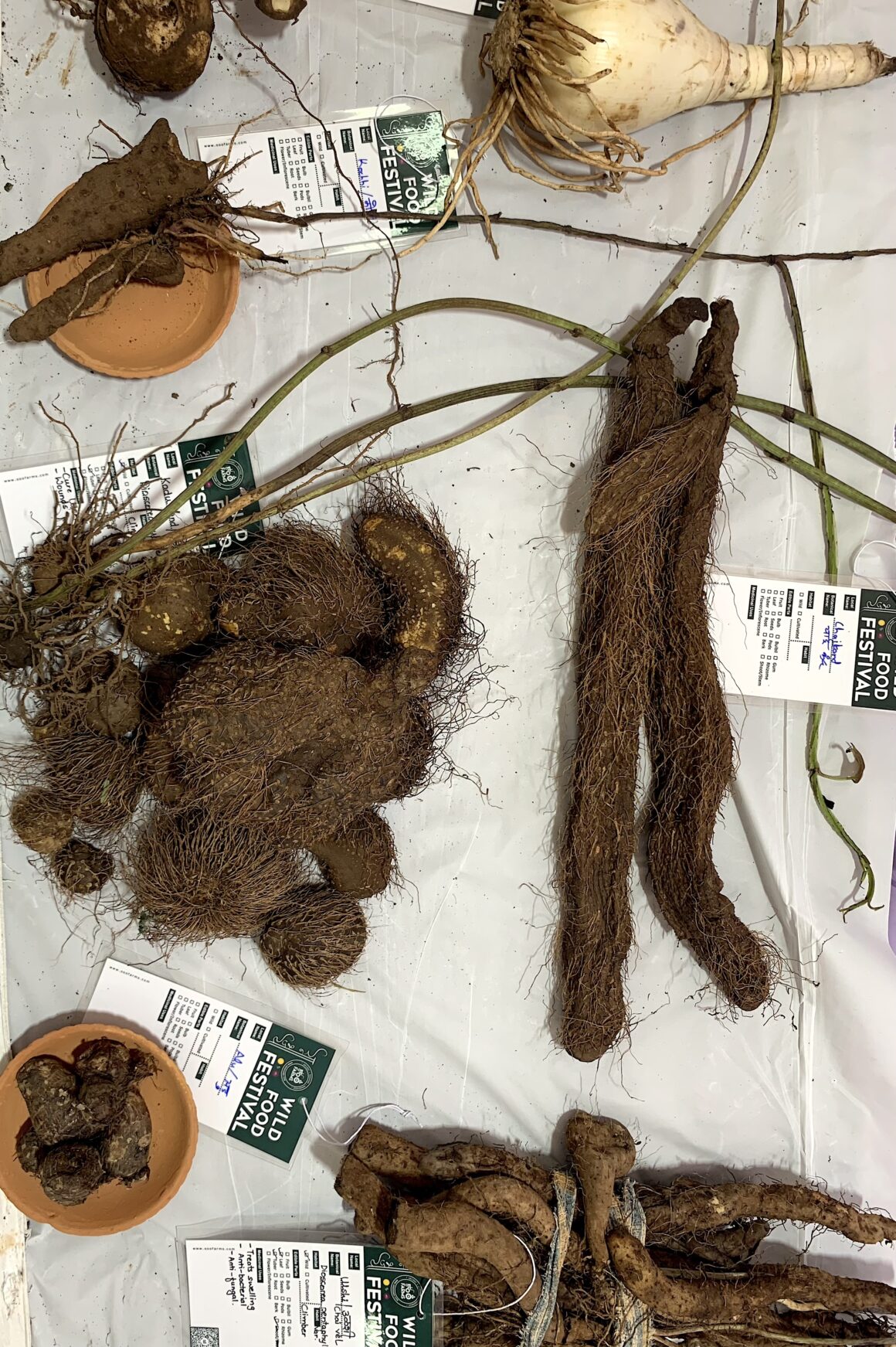
The extensive variety of wild ingredients and native seeds were carefully labelled in both English and Marathi. Photos by Tanvi Kuckian.
The Locavore Zone
Team Locavore curated a space for guests to take a break from all the eating. The Locavore Zone included the Longing for Home Food Booth, an interactive art installation where guests could listen to audio recipes featuring wild ingredients from across India. They could also participate in a round of The Locavore Shuffle, an interactive activity that fosters meaningful conversations with fellow attendees on food, culture, memory, identity, and, of course, wild foods.
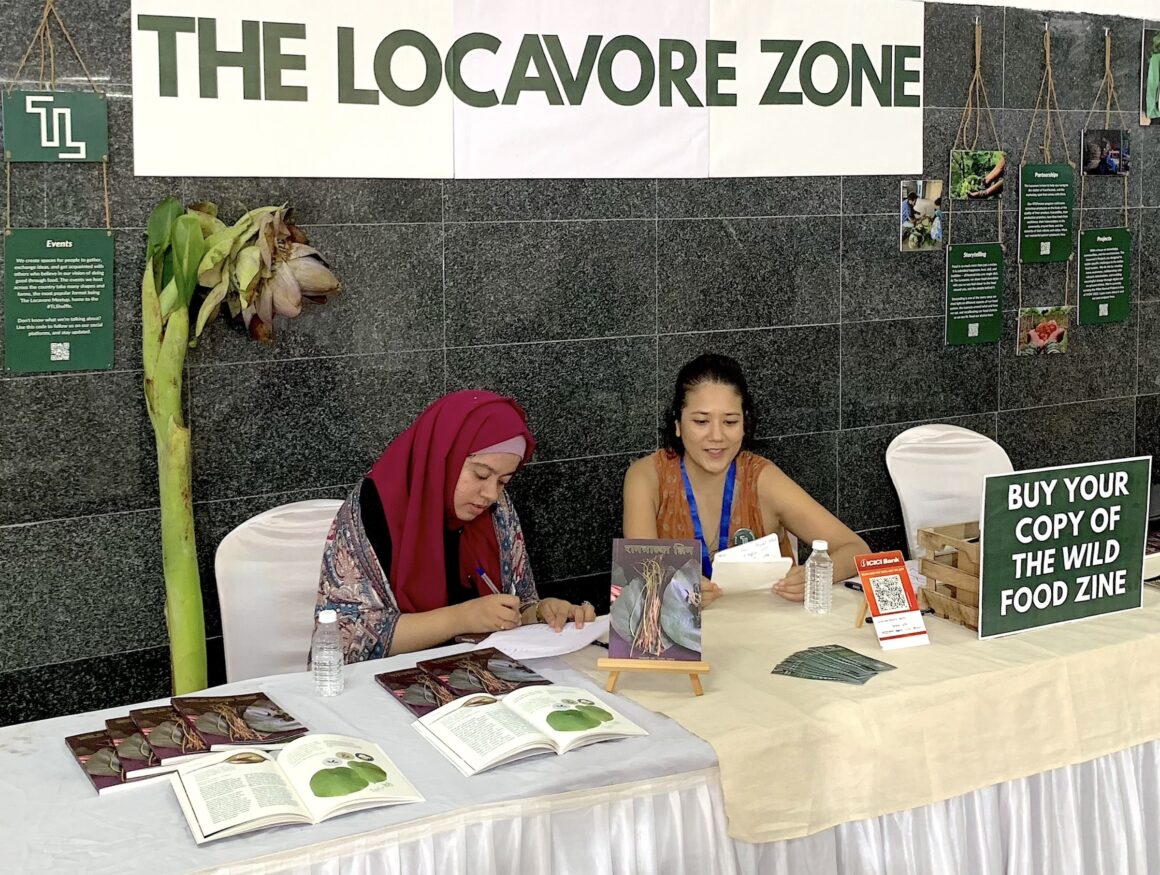
Our Organisations Partnerships Associate Zeeba Kazi (L) and Events Lead Mayuri Nigam (R) wait for attendees to arrive at The Locavore Zone. Photo by Tanvi Kuckian.
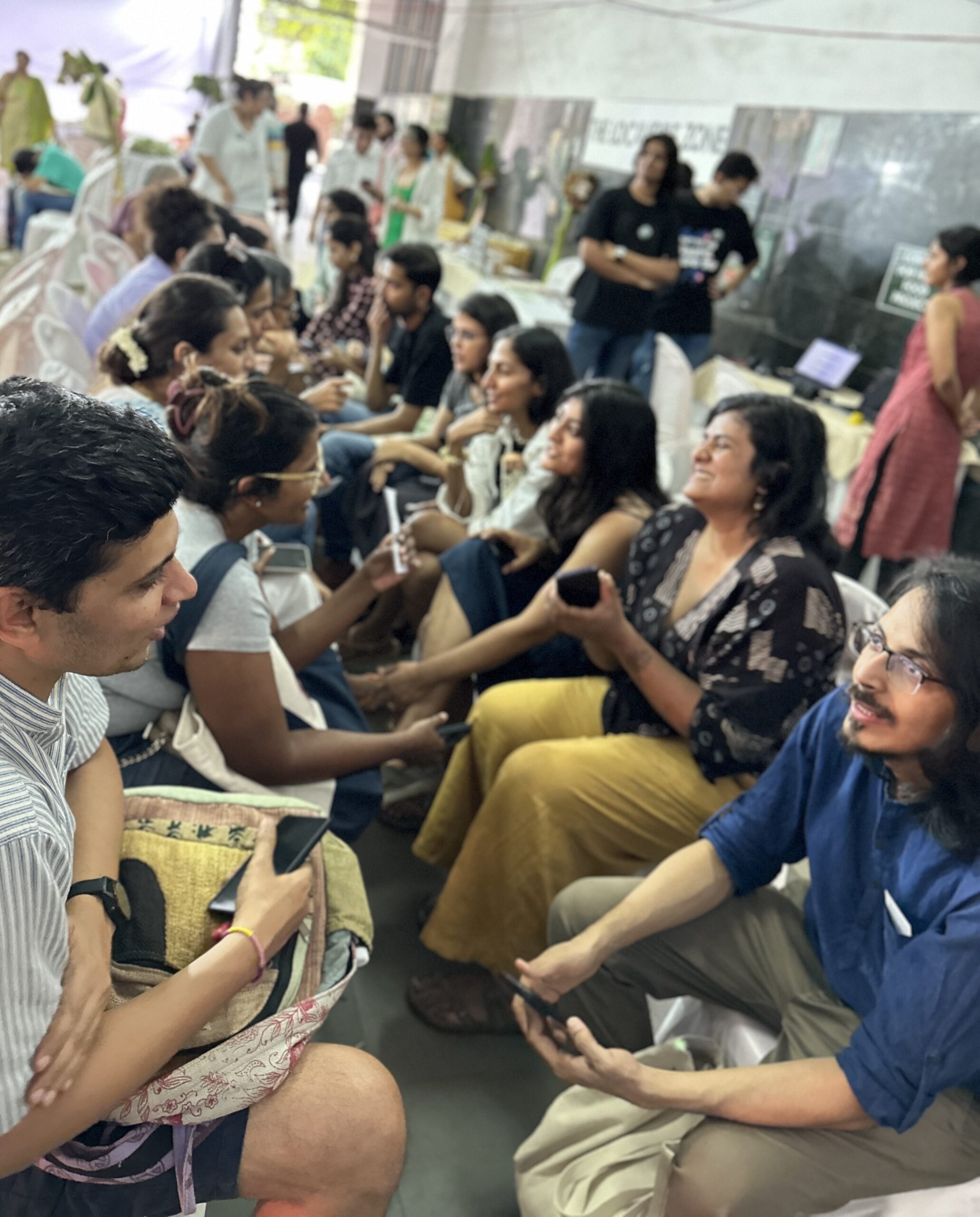
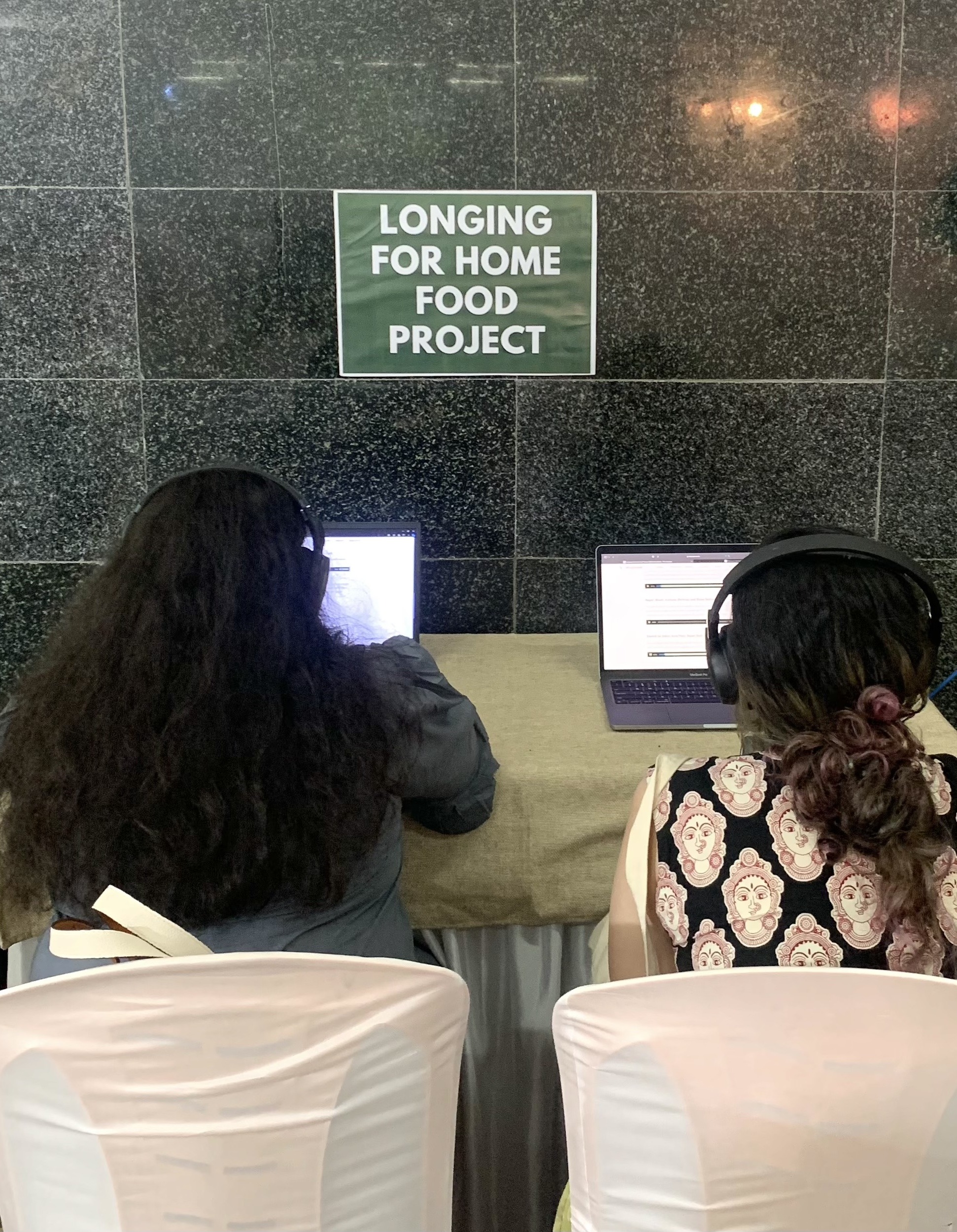
(L) Attendees chat about all things at our iconic The Locavore Shuffle. Photo by ChefTZac. (R) Guests tune out the bustle of the auditorium as they listen to recipes at our Longing For Home Food Booth. Photo by Yashvi Shah.
People could also grab a copy of The Wild Food Zine—a beginner’s guide to Maharashtra’s rich bounty of wild foods and the indigenous forest-dwelling communities that have preserved them—in both, English and Marathi.
A Bustling Farmers’ Market
OOO Farms set up a farmers’ market featuring fresh wild produce foraged from the forests by tribal communities as well as native ingredients grown by farmers from OOO Farms. There was forest honey, sprouted ragi malt, and even a mahua-based massage oil for babies!
Cultural Performances
The day concluded with cultural performances by members of Tarpa and Warli tribes featuring tarpa players and dancing. The students of Rizvi College of Hotel Management and other attendees also joined in!
For many guests, tasting and trying out the many dishes was a revelation; in Shailesh’s words, “All the flavours were like Dadar station—jam-packed.”
As for The Locavore’s role in the festival, ChefTZac said, “It was truly special to see how this year’s Wild Food Festival built upon the work and successes of previous years. The festival has evolved in both its scale and impact, and working alongside indigenous communities and the next generation of chefs reinforced just how powerful food can be as a bridge between tradition and modernity. The flavours we shared and the stories we heard were a reminder of why this work matters—to preserve these traditions while making them part of our evolving food culture, keeping the communities that nourish them at the centre.”
All the flavours were like Dadar station—jam-packed.
We also collaborated with some of your favourite eateries in Mumbai and beyond!


your favourite eateries Featured limited-edition wild food dishes On Their Menus.
This year, we expanded the festival by partnering with local chefs and restaurants from 16 August to 31 August. Participating restaurants included Folk, Maska Bakery, Mizu Izakaya, Nair on Fire, Subko, Toast Pasta Bar, and Woodside Inn in Mumbai, as well as Ground Up in Pune. Here’s a run-down of the dishes they served:
At The Locavore, we love planning and executing events that highlight India’s diverse local foods, celebrating community, sustainability, and cultural heritage. Our events feature engaging workshops, discussions, immersive experiences and other formats that connect you to India’s rich food culture. Interested in collaborating or having us organise an event? Reach out at connect@thelocavore.in.
